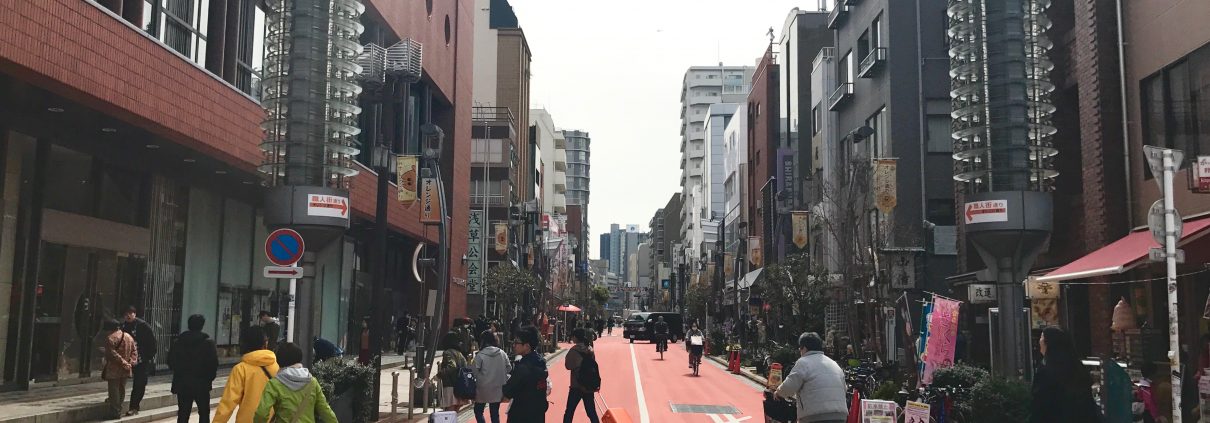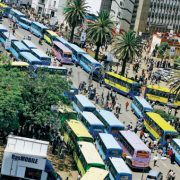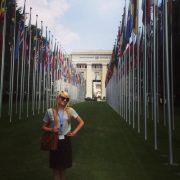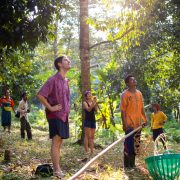Japan: Breaking Urban Expectations
By Paola Mendez, MURP ’17
Whenever I visit a new city, I try not to have many, if any, expectations of what I’ll find. I don’t want any expectations or preconceptions about the city to interfere with the way I actually experience it on the ground. In the case of Tokyo, notoriously the biggest city on earth, it was hard not to expect largeness. Yet, I could not have anticipated the way in which the city’s extreme density, paired with its narrow streets and winding alleys, would make me feel at home. Like my native Mexico City— even more so, in fact— Tokyo would not be able to house all 35 million of its metropolitan inhabitants without building up and to the edges of its sidewalks. Both cities also exude color: Mexico in its vibrantly colored buildings, Tokyo in its spectacular neon signs.
However, a starker contrast could not have been drawn between the two cities’ car culture. In Mexico, the automobile prevails. Despite the elusive fact that only about a quarter of Mexico City residents own a car, multi-lane streets and elevated highways dominate the city. Kids growing up in the city quickly learn not to interfere with their circulation, at the risk of becoming victim of a collision, the leading cause of death for youth. Though most of the city’s residents manage to get around largely using ubiquitous informal pesero buses, formal transit options lag. In Tokyo, on the other hand, pedestrians seemed to feel quite comfortable walking on small streets when cars aren’t passing, and most people can get almost anywhere easily on a train. Even the cars and delivery vehicles seemed scaled down to fit the proportion of Tokyo’s streets; the largest vehicle I remember seeing was not much larger than a minivan.
This strange sense of pedestrian-scaled extreme density even seemed to extend to the Tohoku region, which the Reconstruction group visited to learn about the aftermath of the 2011 earthquake, tsunami, and nuclear disaster. We were told that the Tohoku region, and the town of Rikuzen-takata, where we spent a home-stay, were largely rural. Yet, we still saw the type of multi-story main street development pattern one would likely never see in rural California. Though Rikuzen-takata and its surroundings certainly felt smaller than Tokyo, it still gave off a similar sense of efficient land use. These small yet dense hubs dotted the sparsely-developed hills and mountains, connected by a network of high-speed Shinkansen trains and modest yet uncongested two-lane highways.
The many interesting presentations we heard around the 3/11 disaster and subsequent reconstruction efforts gave us insight into not only on these topics, but also on some of the gendered underpinnings of Japanese society. Of the fourteen presenters we heard from, only one (Ms. Mizutani from the Koganecho Area Management Center) was a woman. Otherwise, the role of women in these presentations was typically limited to showing us in, offering us water, or, at most, translating. For many of the women in our group, this was discouraging, though not necessarily surprising.
Perhaps as important as all the great things we saw in Japan was all we didn’t see. In our various discussions around the reconstruction, we heard that the Japanese government wanted to use the 2020 Olympics to show the world that the Tohoku area, including Fukushima prefecture, had recovered from the disaster; yet, nothing we saw or heard during our time in Japan indicated the evictions that have also been taking place in preparation. Over the course of the whole trip, we saw only one homeless man in the Ikebukuro train station, and none in the various parks and public spaces we visited or walked past. This stands in stark contrast to the protests that have taken place against the eviction of the homeless from Meiji Park.
The things we were able to see were highly mediated, seen through the eyes of our wonderful Japanese student organizers, who understandably wanted to show us the best of their country. For the American students, our lack of ability to speak and understand for ourselves in Japan was a significant obstacle to forming our own understanding of things. While I was under no illusion of my own ability in Japanese, as a fluent Spanish speaker, I am usually the one doing the translating in the context of California. This experience as a linguistic outsider in Japan was more important than I would have expected, and has given me new insight into how others’ experiences are shaped by their translator.











